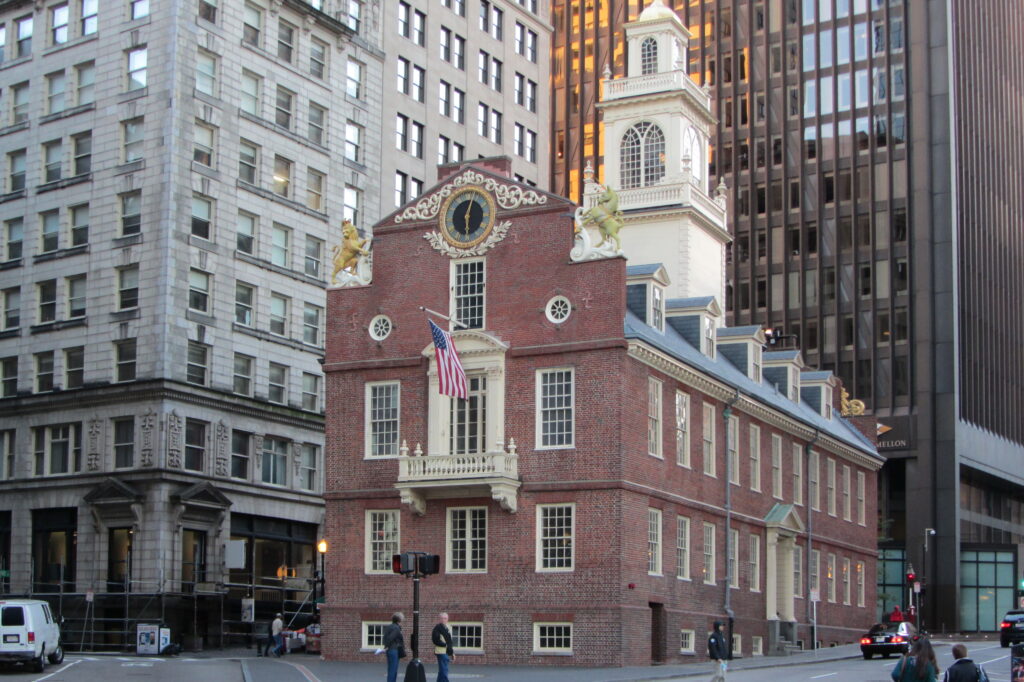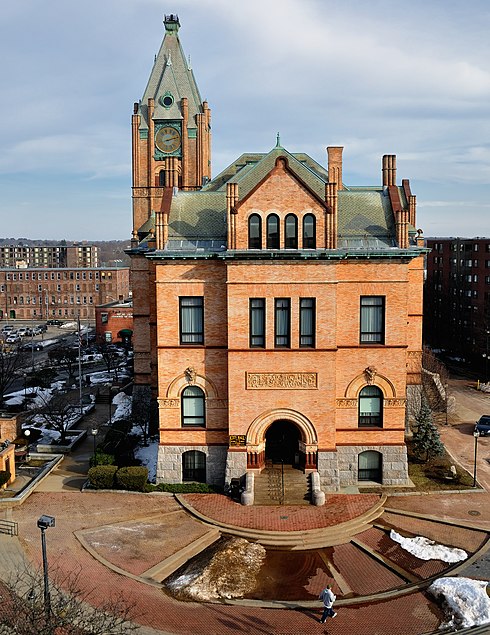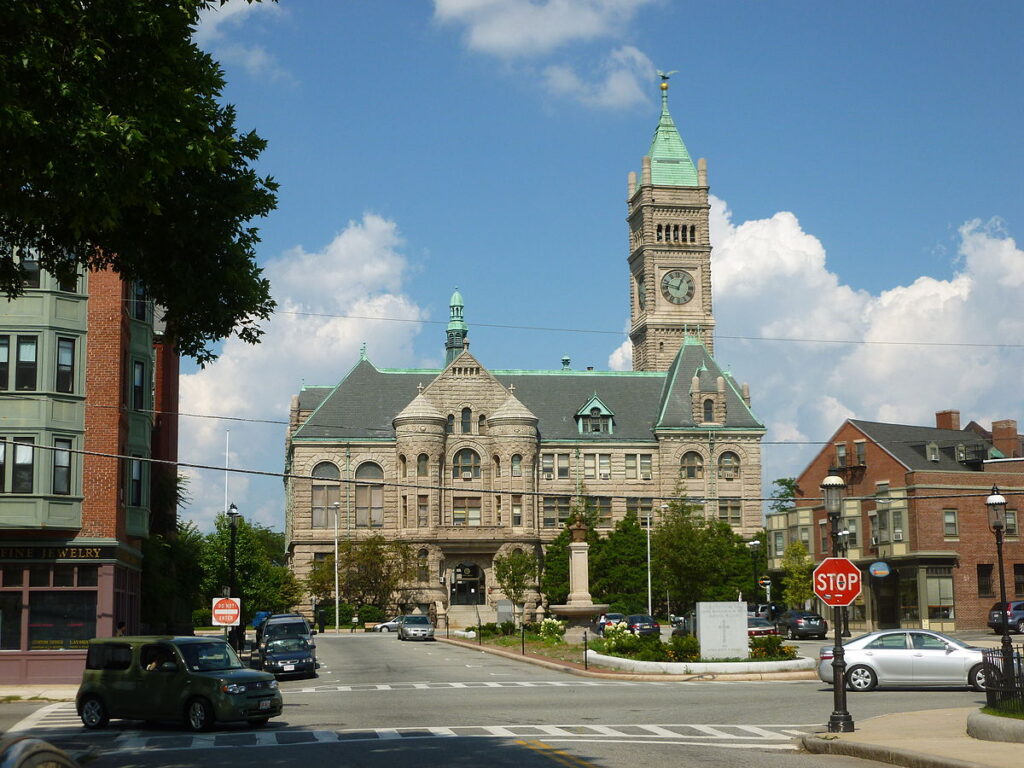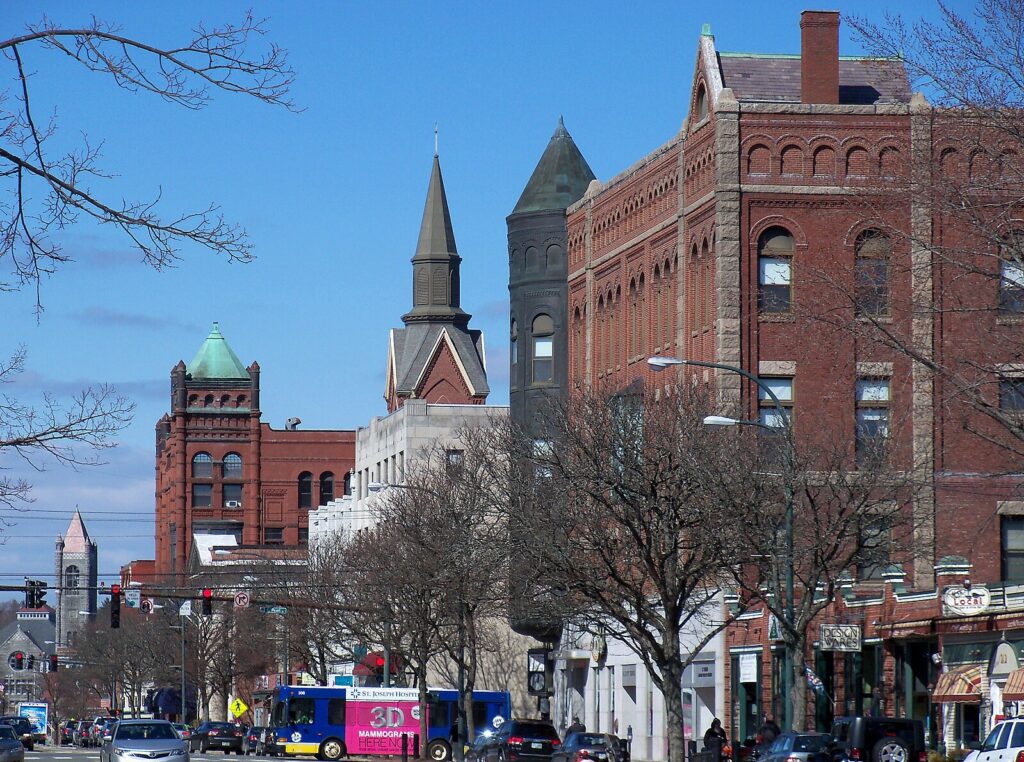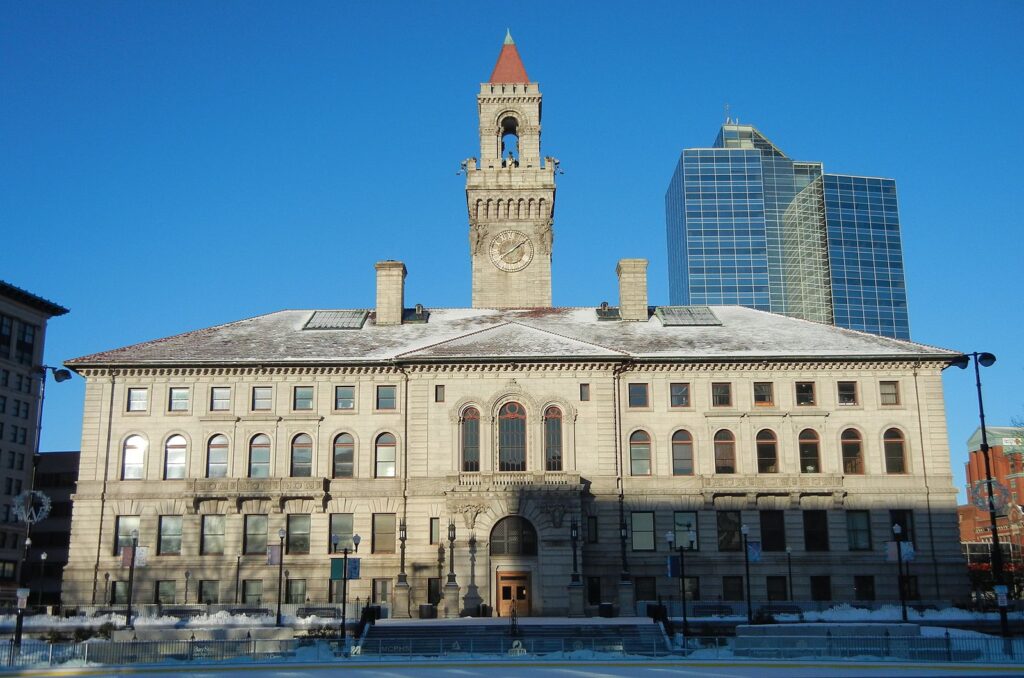Knob and Tube Wiring Replacement in Worcester, MA
From safety concerns to insurance complications, the presence of outdated knob and tube wiring can cast a shadow of uncertainty over your Massachusetts home.
At Kuhlman Electric, we understand the stress and frustration that comes with navigating the challenges of knob and tube wiring replacement in Worcester, MA. That’s why we make this transition to a more safe and efficient modern electrical system as easy as possible for local homeowners. Our team of experienced and knowledgeable electricians work tirelessly to ensure that your new electrical system exceeds industry standards for safety and reliability.
Contact Kuhlman Electric today to learn more about the need for replacing unsafe knob and tube wiring in your home in Worcester, MA.
Knob & Tube Wiring Testimonials and Google Reviews
Jay Selig
Jeff Da Costa
P M
Maureen Thomsen
Jodie Glennon
Richard Itwaru
Ellen Mae
Kathy Reilly
Jacalyn Crowe
Edward Kalman
Why Worcester, MA Chooses Kuhlman Electric for Knob and Tube Wiring Replacement
With three decades of experience serving Massachusetts, Kuhlman Electric brings a wealth of knowledge and expertise to all the projects we take on. We’ve seen it all and know how to handle any knob and tube wiring replacement project or electrical emergency efficiently and effectively.
We take great pride in our workmanship and strive to deliver exceptional results to our clients in Worcester. With our 35 years of industry experience, we go above and beyond to ensure that your new electrical system meets the highest standards of quality and reliability.
When you choose Kuhlman Electric for knob and tube wiring replacement, you’re choosing experience, safety, and quality electrical work.
What is Knob and Tube Wiring?
Knob and tube wiring is an outdated electrical system commonly found in homes built before the 1950s. It consists of ceramic knobs and tubes that support and protect wires running through walls and ceilings. Unlike modern wiring systems, knob and tube wiring typically features individual conductors for hot and neutral wires, which are spaced apart to prevent overheating.
This type of wiring was once considered state-of-the-art, but it is now widely regarded as obsolete due to safety concerns and limitations. While knob and tube wiring may have been sufficient for the electrical demands of the past, it is inadequate for the power needs of modern households. As a result, homeowners are wise to replace knob and tube wiring with safer and more efficient electrical systems.
Does Your Boston Home Have Knob and Tube Wiring?
Knob and tube wiring was commonly installed in homes built before the 1950s. If your home is of this vintage, there’s a higher likelihood that it may have knob and tube wiring. In some cases, knob and tube wiring may be visible in accessible areas such as basements, attics, or crawl spaces. Look for ceramic knobs and tubes, as well as cloth-covered wires, which are typical features of knob and tube wiring.
Knob and tube wiring systems are often connected to older-style fuse boxes rather than modern circuit breaker panels. If your home still has a fuse box, it may indicate the presence of knob and tube wiring. If your home has undergone renovations in the past, there’s a possibility that knob and tube wiring was replaced with newer wiring. However, it’s essential to confirm this through a professional inspection, as hidden sections of knob and tube wiring may still remain.
Common Issues Homeowners Face with Knob and Tube Wiring
Knob and tube wiring, once a standard electrical system in older homes, presents several challenges and safety concerns for homeowners. Understanding these common issues is crucial for ensuring the safety and reliability of your home’s electrical system.
The Wiring Is Not Grounded
One of the most significant drawbacks of knob and tube wiring is its lack of grounding. Unlike modern electrical systems, which include grounding conductors to redirect excess electricity safely, knob and tube wiring relies solely on insulation to prevent electrical hazards. Without proper grounding, the risk of electrical shock and fire increases, posing a significant safety concern for homeowners.
Insurance Companies May Not Insure It
Many insurance companies view knob and tube wiring as a high-risk feature and may refuse to insure homes with this type of wiring or charge higher premiums. Insurance companies often consider knob and tube wiring to be outdated and potentially hazardous, increasing the likelihood of electrical fires and property damage. As a result, homeowners with knob and tube wiring may face challenges obtaining affordable insurance coverage for their homes.
Areas With It Cannot Be Insulated
Another limitation of knob and tube wiring is its impact on home insulation. Because knob and tube wiring requires open air space around the wires for heat dissipation, areas with this type of wiring cannot be insulated using conventional methods. This restriction can lead to energy inefficiency, as homes with knob and tube wiring may experience heat loss in winter and heat gain in summer. Additionally, inadequate insulation can contribute to comfort issues and higher energy bills for homeowners.
Knob and Tube Wiring Insulation Becomes Brittle
Over time, the insulation surrounding knob and tube wiring can deteriorate and become brittle due to exposure to heat, moisture, and aging. Brittle insulation increases the risk of exposed tube wires and electrical hazards, as well as potential damage during routine maintenance or renovations. As the insulation deteriorates, the likelihood of electrical faults and fires escalates, posing a serious threat to the safety of homeowners and their property.
It May Have Asbestos Coating & Insulation
Some knob and tube wiring systems may contain asbestos coating and insulation, which pose additional health risks for homeowners. Asbestos is a hazardous material known to cause respiratory issues and cancer when disturbed or inhaled. If knob and tube wiring with asbestos insulation is present in your home, it’s essential to handle it with caution and seek professional assistance for safe removal and replacement.
Rodents Eat Knob and Tube Wiring
Rodents are attracted to the insulation materials used in knob and tube wiring, leading to damage and potential issues. Rodent infestations can compromise the integrity of the wiring, exposing bare conductors and increasing the risk of electrical shorts and fires. Additionally, rodent activity near electrical wiring poses safety risks for homeowners and can result in costly repairs and replacements.
Signs Your Knob and Tube Wiring Needs To Be Replaced
Once a standard electrical system in older homes, knob and tube wiring can pose significant safety risks if not properly maintained or replaced. Recognizing the signs that indicate the need for replacement is crucial for protecting your home and ensuring the safety of your family. If you notice any of the following signs, it’s essential to have your knob and tube wiring replaced promptly by a qualified electrician:
- Flickering or Dimming Lights: One common indication of problems with knob and tube wiring is dim or flickering lights. This symptom may occur when the wiring is damaged or overloaded, causing fluctuations in electrical current and impacting the performance of lighting fixtures throughout your home.
- Overloaded Circuits: Knob and tube wiring systems were not designed to handle the electrical demands of modern appliances and electronics. As a result, overloading circuits with high-wattage devices can put strain on the wiring, leading to overheating and potential fire hazards.
- Burning Smells or Unusual Odors: The presence of burning smells or unusual odors, such as a musty or burning odor, can be a sign of electrical problems with knob and tube wiring. These odors may indicate overheating, insulation breakdown, or electrical arcing within the wiring system.
- Sparking Outlets or Switches: Sparking outlets or switches are a clear indication of electrical faults within your home’s wiring system. Knob and tube wiring, particularly if it has deteriorated over time, may be more prone to sparking due to exposed wires or loose connections.
- Frequently Tripped Circuit Breakers or Blown Fuses: Frequent circuit breaker trips or blown fuses are often symptomatic of overloaded circuits or electrical faults within the wiring system. Knob and tube wiring, with its limited capacity and lack of grounding, may struggle to handle the demands of modern appliances or devices.
Other Areas We Serve in MA and NH
Knob and Tube Wiring Replacement Frequently Asked Questions
How much does it cost to replace tube and knob wiring?
The cost of replacing knob and tube wiring can vary depending on various factors, including the size of your home, the complexity of the installation, and any additional upgrades needed. On average, homeowners can expect to pay between $5,000 and $10,000 for a complete knob and tube wiring replacement in a typical single-family home in Worcester, MA.
However, this cost can vary significantly based on the specific requirements of your home and the extent of the wiring replacement needed. It’s essential to consult with a licensed electrician to obtain a detailed quote tailored to your home’s needs.
Is knob and tube wiring legal in Massachusetts?
Knob and tube wiring is not explicitly illegal in Massachusetts. However, its use is highly discouraged due to safety concerns and building code regulations. Massachusetts has strict building codes in place to ensure the safety of residential properties, and knob and tube wiring may not meet these standards.
Additionally, many insurance companies may refuse to insure homes with knob and tube wiring or may charge higher premiums due to the increased risk of electrical fires. Homeowners should consult with licensed electricians and insurance providers to understand the implications of knob and tube wiring and consider replacing it with a modern electrical system to ensure compliance.
Can you sell a house with knob and tube wiring in Massachusetts?
Selling a house with knob and tube wiring in Massachusetts is possible, but it may affect the sale price and marketability of the property. Homebuyers and sellers should be aware that knob and tube wiring is considered outdated and may pose safety risks.
As a result, buyers may request the replacement of knob and tube wiring as a condition of sale, or sellers may need to adjust the sale price to reflect the cost of replacement. It’s essential to disclose the presence of knob and tube wiring to potential buyers and work with a licensed electrician to address any safety concerns.
Is it worth replacing knob and tube wiring?
Yes, replacing knob and tube wiring is worth it for the safety and reliability of your home’s electrical system. While the initial cost of replacement may seem significant, consider the long-term benefits of upgrading to a modern electrical system. Knob and tube wiring is outdated and may pose safety risks due to its lack of grounding, insulation deterioration, and capacity limitations.
By replacing knob and tube wiring with a modern electrical system, you can enhance the safety of your home, reduce the risk of electrical hazards and fires, and improve the resale value and marketability of your property. Investing in knob and tube wiring replacement is an investment in the safety, comfort, and value of your home for years to come.
Contact Kuhlman Electric Services for Knob and Tube Wiring Replacement in Worcester, MA Today
If you suspect that your home has knob and tube wiring or are experiencing electrical issues, it’s imperative that you do not wait until it’s too late. Ignoring the signs of deteriorating knob and tube wiring can put your home and family at risk of electrical hazards and fires. When you choose Kuhlman Electric for knob and tube wiring replacement, you can trust that your home is in good hands. We’ll work closely with you to assess your home’s electrical needs and develop a customized replacement plan.
Contact Kuhlman Electric today for more details regarding knob and tube wiring replacement or other electrical services from the professionals serving Worcester, MA.

